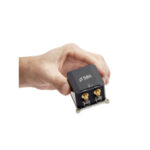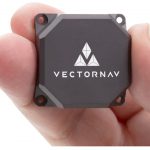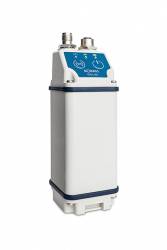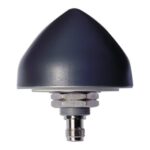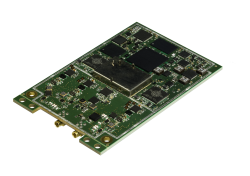 AsteRx4 OEM receiver
AsteRx4 OEM receiverSeptentrio has launched its next-generation dual-antenna GNSS receiver — the AsteRx4 OEM, a multi-frequency receiver that incorporates the latest GNSS tracking and positioning algorithms and operates with all available GNSS signals (GPS, GLONASS, BeiDou, Galileo).
Septentrio has launched its next-generation dual-antenna GNSS receiver — the AsteRx4 OEM, a multi-frequency receiver that incorporates the latest GNSS tracking and positioning algorithms and operates with all available GNSS signals (GPS, GLONASS, BeiDou, Galileo).
On April 15, Septentrio and SBG Systems jointly announced that SBG Systems, a French manufacturer of miniature inertial navigation systems (INS), has selected the AsteRx4 OEM GNSS receiver to incorporate into the SBG’s new Apogee product line. The Apogee series targets such applications as hydrography, mobile mapping, and aerial survey where survey-grade attitude and positioning measurements are required. The announcement was made at the at Ocean Business (OB) 2015 conference in Southampton, United Kingdom.
Incorporating new multipath and ionosphere modeling algorithms, the AsteRx4 offers scalable positioning accuracy from meter to centimeter levels, according to the company. Together with heading and reliable error estimates, the AsteRx 4 OEM is designed to operate in adverse conditions on land, at sea, and in the air.
Septentrio says that the AsteRx4 OEM supports a full range of positioning techniques, from stand-alone to real-time kinematic (RTK). For users who operate in more remote regions of the globe, the AsteRx4 OEM supports VERIPOS and TERRASTAR correction precise point positioning (PPP) services. Furthermore, the receiver features special interference-mitigation technology that filters out intentional and unintentional ambient RF interference.
The AsteRx4 OEM has a similar hardware interface as earlier AsteRx receivers and supports the same open and documented command and binary output format. Users will be able to operate their receiver without special configuration software by using a web interface available via network and USB connections.
“We are particularly proud of the solutions for interference robustness that we have incorporated into our new ASIC, the GReCo4,” says Jan Van Hees, VP of Business Development, “and the solid and reliable positioning algorithms that result from taking the receivers into the most extreme environments and from focusing not only on accuracy, but on reliability of the position solution.”
The AsteRx4 along with all the AsteRx family of receivers will be on display during the Ocean Business 2015 exhibition from April 14–16 at the National Oceanography Center in Southampton.

